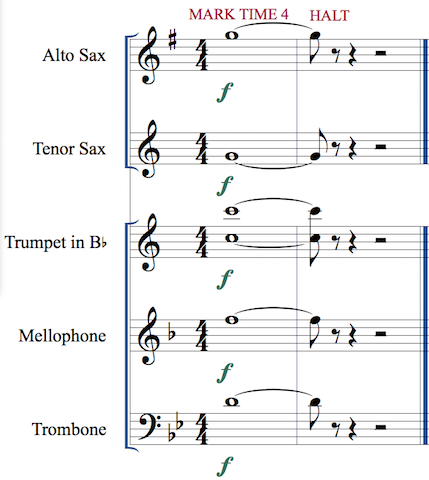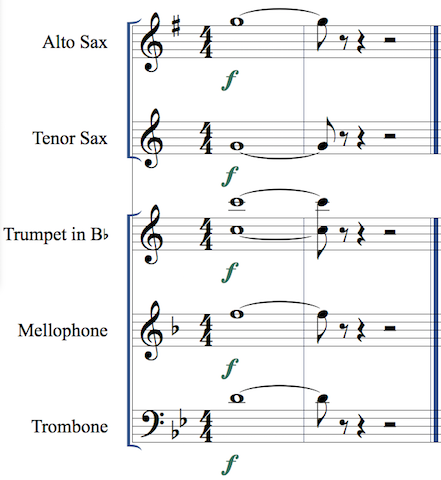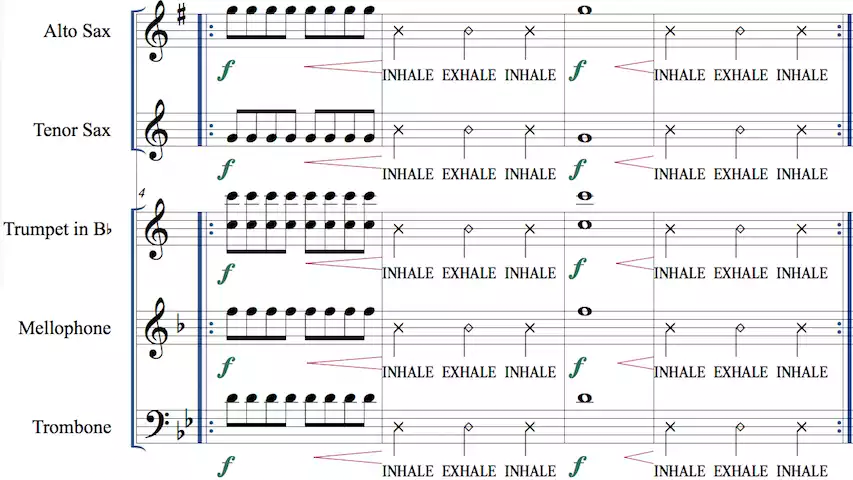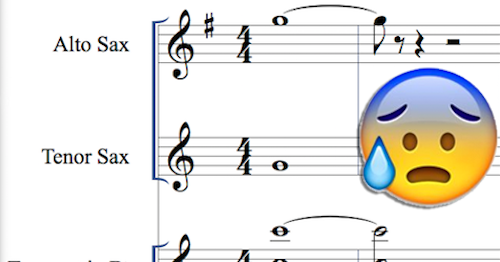5-Minute Read: Catch and Release!
Welcome to a new fall and a new school year! Here's hoping that you have all had a successful start to your new band and school year after a restful (though seemingly ever shorter) summer break. By now, you've hopefully had time to get some of your marching band's field production out there, and some of you may have already performed at a Friday night football game! However, we're all early in the process of learning, much less cleaning, the marching band musical components of our halftime shows. Today I'd like to focus your ears on a crucial element in that cleaning process that you can begin right away: releases!
Note releases can be some of the most overlooked, ignored, and therefore nagging elements of a musical performance, especially in an outdoor setting. However, they are critical to a polished and effective musical effect and in sound impact on the audience. Here are some important techniques you can utilize to detect poor releases and to improve your performers' release technique!
Take Time to Catch Poor Releases
As always, listening to a recording of your ensemble can be the most important first step in detecting these issues. Listen to (don't watch!) a video or audio recording of your band's full field performance, with a score in hand. Make a catalogued listed of measure numbers regarding any releases that fail the following tests:
- Does every single performer end their sound production at the exact same time?
- Does every single performer sustain, reduce, or grow their volume level at the same rate?
- Does the release feature an open sound, or is there a sudden stopping of air and/or a change in tone color at the last second?
Any release, be it the end of an 8th note or of three whole notes tied together, that fails any part of that three-part test requires your attention. Believe me, audiences and judges alike will take note of these issues. In addition, poor release habits and techniques in your field show will continue into other arenas of musical performance in which your students engage!
Define Release Counts and Connect to the Feet
Sometimes our traditional notation conventions can confuse our young performers. The old English convention of tying to a beat one 8th note to signify a beat one release can seem strange to some students and doesn't truly, intuitively add up to the four count sustained pitch we intend. Therefore, it is very important to define the count where the release occurs, and to tie it to what part of what foot is doing what! Take this excerpt for example:
If your performers mark time in a toes-down-heels-up manner, it's important to define that the release will occur when the left heel hits the ground on count 1 of the final measure. Anything you can do to tie your performers' musical stops and starts to their feet will do wonders in cleaning up releases. You can do the same to tie your releases to heels on the move, or toes in a backwards march or a high knee step. Also, if you have body choreography, tying a breath to a particular physical checkpoint is always a winning method. However, it's not enough to just release at the same time. We've also got to release with a strong phrase ending and with an open, beautiful tone quality. For that to occur we need to:
Define and Practice Excellent Release Technique
Human beings naturally tend to "let up" at the last moment of a sustained note. We don't want to hang over and be late to a release and get called out in front of our peers. Therefore our natural instinct is to take our foot off the gas of the wind stream at the last moment, and/or to close the lips and jaw together at the end of the note. This results in weak, unfinished phrases and in a change in pitch and tone color for the worse, robbing the sound of that release of that ringing echo that we so enjoy in a great wind ensemble. So work to train your performers to use great release technique! Take this written phrase for example:
We want to end strong, with a ringing sound that echoes after the phrase is complete. So use the following exercise to build the muscle memory of a great release! The written 8th notes encourage your performers to subdivided in their minds while sustaining a longer note, making sure that the final 8th notes grow the strongest in volume before slamming into an open-mouthed release created by a strong inhale on the downbeat. Not only does this keep the mouth cavity open for a ringing sound, it ensures that no one hangs over longer than the written count one release indicated. The 2-count exhale on beats 2 and 3 helps to create an empty lung that in turn encourages a full breath on count 4.
The written 8th notes encourage your performers to subdivided in their minds while sustaining a longer note, making sure that the final 8th notes grow the strongest in volume before slamming into an open-mouthed release created by a strong inhale on the downbeat. Not only does this keep the mouth cavity open for a ringing sound, it ensures that no one hangs over longer than the written count one release indicated. The 2-count exhale on beats 2 and 3 helps to create an empty lung that in turn encourages a full breath on count 4.
With releases like this that are unified in timing, volume, and technique, you'll find a new depth of polish and musical satisfaction coming from your ensemble. Give them a try this week as you prepare for your next performance!

